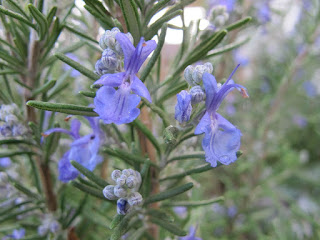As
Rosemary is to the Spirit, so Lavender is to the Soul (bethtrissel.wordpress,
2012)
William
Shakespeare mentioned lavender in his play “The Winter’s Tale Act 4, Sc.4”
“Here's flowers for you; hot lavender, mints, savory, marjoram; The
marigold."(Goodreading)
Lavender
has been known for its gentle and soothing fragrance since ancient times, it is
also very useful for pregnant women and people who have a problems with the
sleep.
Lavender
was used by Greeks and Romans in public baths, the word lavender is derived
from the Latin word lavare, or to wash. Lavender repels insects and also as a
strewing herb, it offers a pleasing scent to us. Lavender was used to mask the
scent of foul smells in the old streets, and remains a universally delicate and
lovely scent for households worldwide. (Jeanroy A.)
German Commission E has approved lavender for use in
case of insomnia, restlessness and nervous stomach irritations and for external
use in baths for the treatment of functional circulatory disorders.
Taking a bath in a lavender scented water, you can prevent or even relax
away mild depression and anxiety.
Lavender may even lower high blood pressure and improve circulation. Oil
of lavender may in some cases be effective in bringing back circulation to some
part of your body that have lost feeling. Regular lavender bath can be enjoyed
throughout a woman's pregnancy as it helps to relax. Lavender is a
wonderful sleep aid. (Annie's Remedy)
A floral water can also be made, and used to sooth sensitive
skin from rashes and quiet the heat of acne prone skin. The natural antiseptic
properties are wonderfully soothing when applied to scrapes and cuts. (Jeanroy
A.)
Martha Stewart wrote down a recipe of Lavender Icing that
was pretty popular in Shakespearean time.
Ingridients:
1/3 cup whole milk
1/2 teaspoon dried lavender
3 cups confectioners' sugar
Bring milk and lavender just to a boil in a small saucepan.
Remove from heat, and let steep 10 minutes. Strain, and discard lavender. Whisk
in sugar until smooth. Strain again. Add food coloring until desired shade. Use
immediately on cupcakes or any other cake. (Stewart M. 2007)
Works
cited:
Jeanroy
A. (https://www.thespruce.com/how-to-use-lavender-1761783)
Goodreading
(https://www.goodreads.com/quotes/917099-here-s-flowers-for-you-hot-lavender-mints-savory-marjoram-the)
Bethrissel
wordpress, 2013 (https://bethtrissel.wordpress.com/2012/04/14/as-rosemary-is-to-the-spirit-so-lavender-is-to-the-soul-other-herbal-quotes/)
Annie's
Remedy (https://www.anniesremedy.com/lavandula-lavender.php)
Martha
Stewart Living, May 2007 (https://www.marthastewart.com/340910/lavender-icing)




















